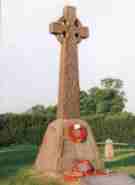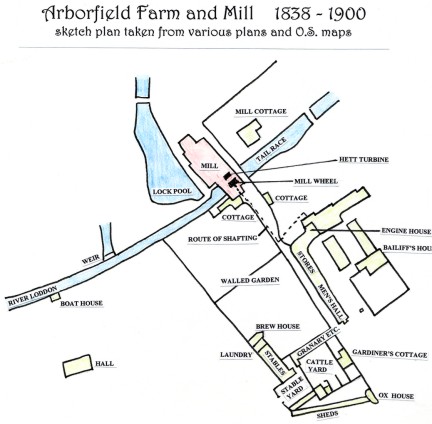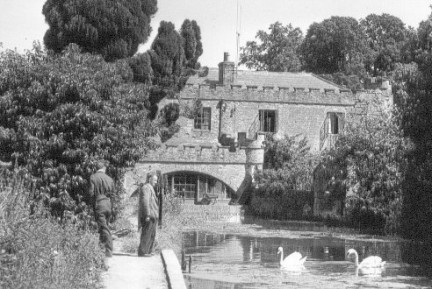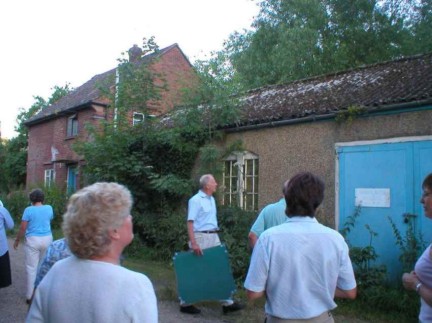
|
Arborfield
|
|
Properties
Related sites:
Death of Charles New at the Mill, 1921 Arborfield Hall Sale document, 1919, Old Water Mill |
The Reading Mercury of 15th August 1953 quoted a previous issue of the Reading Mercury dated 4th August 1794, which detailed the auction of Arborfield paper mill. It stated "Arborfield Mill - well supplied by the river Loddon, with every conveniency for a considerable business". The River Loddon flows below the former gardens of Arborfield Hall and in 1953 a curiously castellated brick ex-mill, the foundations dating back to 1500, was standing where mills have stood for centuries - with a pool still supplying eels, as it did for the Bishops of Salisbury at Sonning, at the time of the Domesday survey. There had been a grist mill existing at Arborfield for
a great number of years and fishing rights which stretched back to the
16th century. This mill was established as a paper mill by Mr. George
Dawson. The mill was a mixed blessing to its owners and operators. It was known to have caught fire at least twice, with two different accounts from 1829 ('The Times', whose proprietor owned the Bearwood Estate, and the 'Reading Mercury'), and again in 1861 (an account in the 'Reading Mercury'). We are grateful to Dr. Daven Chamberlain, who is researching the paper-making history at the Mill, for supplying us with many fascinating notes covering its various owners, policies for fire insurance, auction sales, bankruptcies and other events, including the absconding of an employee. George Pelsant Dawson (son of George) inherited Arborfield House and Estate from his father. In about 1840, he sold the park and house to Sir John Conroy, Controller to the household of the Duchess of Kent, Mother of Queen Victoria. Sir Edward Conroy in turn inherited Arborfield Hall from his father, but finding that he could not afford to live there, sold the Hall and park to Mr. John Hargreaves in 1855 for his son Thomas. Captain Thomas Hargreaves died in 1891. His heir was his second son Mr. John Reginald Hargreaves and his mother Mrs. Hargreaves lived at the Hall. In 1861 a Deed of Arrangement had to be drawn up between the Hargreaves family and the then mill owner, Alfred Towgood. Here is a map showing the layout of the Farm and the Mill:
At some later date Mrs. Hargreaves is said to have had some of the Mill pulled down. It must have been rebuilt because a sale document of 1919 describes the mill as “A picturesque building of brick with tiled roof, fitted with a 40 H.P. water wheel and a 26 H.P. Turbine, with necessary shafting etc. providing power for driving the pumps for water supply, Dynamo for Electric Current and for working the machinery on Home Farm”. This view from the early 1950's is taken from near the weir.
Mr. H.C.Longhurst who visited the Mill at Arborfield probably in the 1960s recalled that the millstones were in position on the first floor of the two storey buildings at the farm and that there were a number of pulley wheels on the outside of the building facing the River Loddon which was about 150 feet away. His main interest was in trying to discover what form of power had been used to drive the grist mill that he remembered being taken to see. He wrote up his findings in 1984. Longhurst found a block plan of Sir John Conroy’s farm buildings which revealed an engine house but no water turbine (this plan must be dated between about 1840 and 1855 when Sir John owned Arborfield House and Estate). He was pleased to discover that the engine used by Sir John Conroy had been one from the Reading works of Barrett, Exall & Andrews, although it was not possible to learn if the two steam engines for the later paper mill were from the same source. Longhurst eventually found, at the Berkshire Record
Office, a mention of a water turbine on the paper mill site which had
been used by Hargreaves to drive a dynamo with which to light Arborfield
Hall and other buildings. This turbine plus dynamo could not have been
part of the paper making concern. However the turbine had been built by
Charles Louis Hett and had driven a 100 watt dynamo with lead acid
batteries and its date of manufacture was 1885 (the first use of
electric lighting in a house was in 1880).
ref: Berks. Record Office - D/EAI T4, D/EX 1211/50/1,
|
||
|
Any Feedback or comments on this website? Please e-mail the webmaster |


